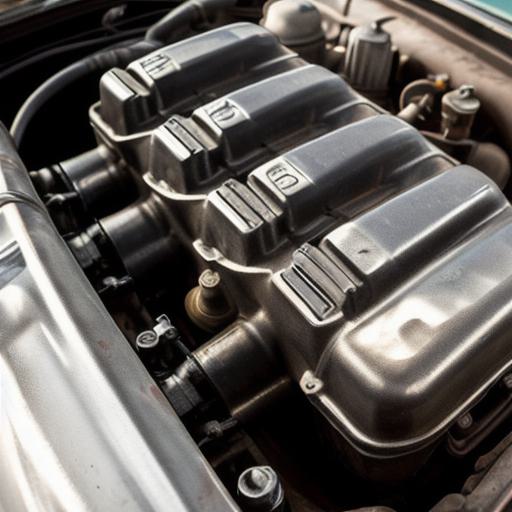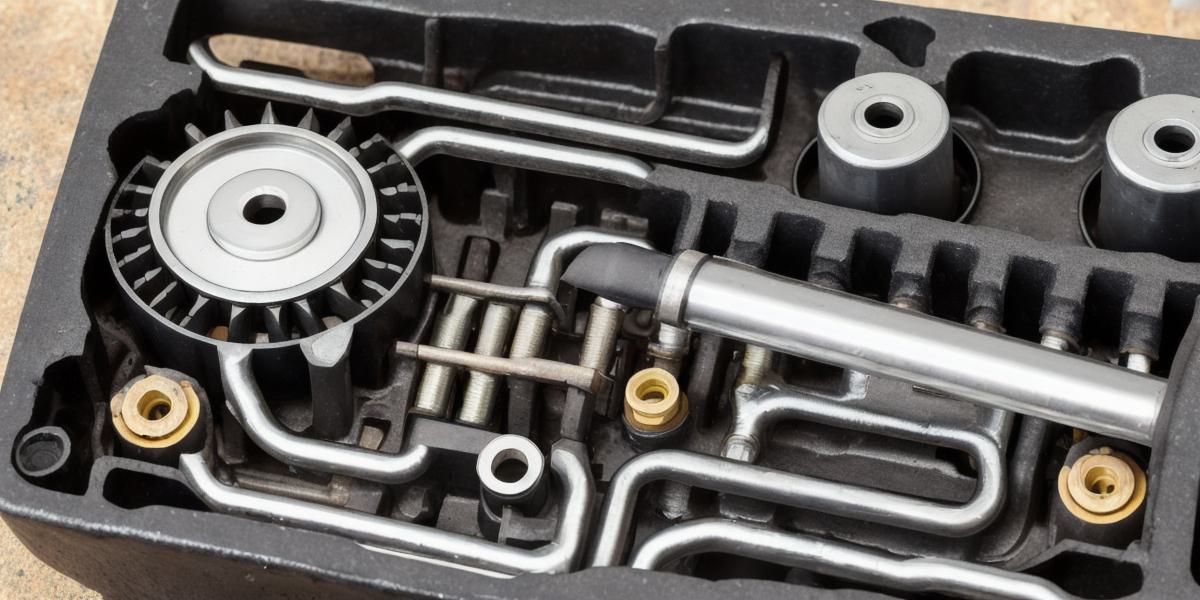The head gaskets of your Chevy 350 motor are an essential part that keeps the engine running smoothly. However, with time and wear and tear, these gaskets can become loose or damaged, leading to various problems such as leaks, overheating, and reduced performance. In this comprehensive guide, we will walk you through the process of replacing head gaskets on your Chevy 350 motor step by step. We will also provide tips and tricks to help you optimize the process and ensure a successful outcome.
Why are Head Gaskets Important?
Head gaskets are critical components of your Chevy 350 motor. They are located between the engine block and the cylinder head and serve several functions, including:
- Sealing the combustion chamber: Head gaskets prevent air and fuel from escaping into the cooling system and also keep the engine oil in its intended place.
- Preventing overheating: The head gasket helps to seal the combustion chamber, which reduces the amount of coolant that enters the engine, preventing it from overheating.
- Maintaining engine performance: Head gaskets are designed to distribute the pressure evenly across the cylinder walls and pistons, ensuring that your engine operates at optimal efficiency.
When to Replace Head Gaskets?
It’s essential to replace head gaskets before they become damaged or loose, as this can cause severe problems in your engine. The following are some of the signs that indicate it’s time to replace your head gaskets:
- Excessive oil consumption: If your engine is consuming more oil than usual, it could be a sign that your head gasket is damaged or loose.
- Coolant leaks: If you notice any coolant leaking from the engine, it’s possible that the head gaskets are damaged, and it’s time to replace them.
- Engine overheating: If your engine is overheating, it could be due to a faulty head gasket.
- Reduced performance: If your engine’s performance has declined, it could be due to worn-out head gaskets.
Tools and Materials Needed
Before you start the replacement process, make sure you have all the necessary tools and materials on hand. The following are some of the essential items you will need:
- Engine gasket set for your Chevy 350 motor
- Gasket removal tool or socket wrench
- New engine oil
- Coolant flush kit
- Thermometer
- Tarp or plastic sheet to protect your work area
- Gloves
- Safety glasses
- Torque wrench or socket wrench

- Bearing puller (optional)
Step-by-Step Guide to Replacing Head Gaskets on a Chevy 350 Motor
Replacing head gaskets on your Chevy 350 motor can be a daunting task, but with the right tools and knowledge, you can do it yourself. Follow these steps to replace your head gaskets:
Step 1: Drain the Coolant System
Before you start replacing the head gaskets, you need to drain the coolant system to prevent any damage caused by mixing old and new coolant. Follow these steps to drain the coolant system:
- Locate the coolant drain plug at the front of the engine.
- Place a plastic container under the plug.
- Remove the plug using a wrench.
- Wait for the coolant to drain completely before proceeding to the next step.
Step 2: Remove the Old Head Gaskets
Once you have drained the coolant system, it’s time to remove the old head gaskets. Follow these steps to remove the old head gaskets:
- Locate the head gasket removal tool or socket wrench.
- Place the tool over the head gasket and apply gentle pressure to loosen it.
- Remove the head gasket by pulling it off the cylinder walls and pistons.
- Repeat the process for all the head gaskets.
Step 3: Prepare the New Head Gaskets
After removing the old head gaskets, it’s time to prepare the new ones for installation. Follow these steps to prepare the new head gaskets:
- Clean the cylinder walls and pistons thoroughly with a clean rag.
- Apply a thin layer of oil to the edges of the new head gasket.
- Place the new head gasket over the cylinder walls and pistons, ensuring that it’s centered and aligned correctly.
Step 4: Install the New Head Gaskets
Now that you have prepared the new head gaskets, it’s time to install them in your Chevy 350 motor. Follow these steps to install the new head gaskets:
- Place the engine oil in the engine block.
- Install the head gasket removal tool or socket wrench over the new head gasket.
- Apply gentle pressure to tighten the head gasket.
- Repeat the process for all the head gaskets.
- Check the torque specs for your Chevy 350 motor and tighten the head gaskets accordingly.
- Refill the coolant system with new coolant.
- Start the engine and let it run for a few minutes to ensure that everything is working correctly.
Tips and Tricks for Successful Head Gasket Replacement
Here are some tips and tricks to help you optimize the head gasket replacement process:
- Use a high-quality engine oil that’s specifically designed for your Chevy 350 motor.
- Use a coolant flush kit to flush out all the old coolant from the system.
- Ensure that you tighten the head gaskets correctly and follow the recommended torque specs.
- Take your time when removing and installing the head gaskets to avoid any damage or mistakes.
- Check the engine for leaks after replacing the head gaskets to ensure that everything is working correctly.
- If you’re unsure about the replacement process, it’s always best to consult a professional mechanic or follow a step-by-step guide.
Summary
Replacing head gaskets on your Chevy 350 motor can be a challenging task, but with the right tools and knowledge, you can do it yourself. By following these steps and tips, you can successfully replace your head gaskets and prevent any severe problems from occurring in your engine. If you’re not comfortable with the replacement process, it’s always best to consult a professional mechanic or follow a step-by-step guide. Remember to always use high-quality products and take your time when replacing the head gaskets to ensure a successful outcome.



